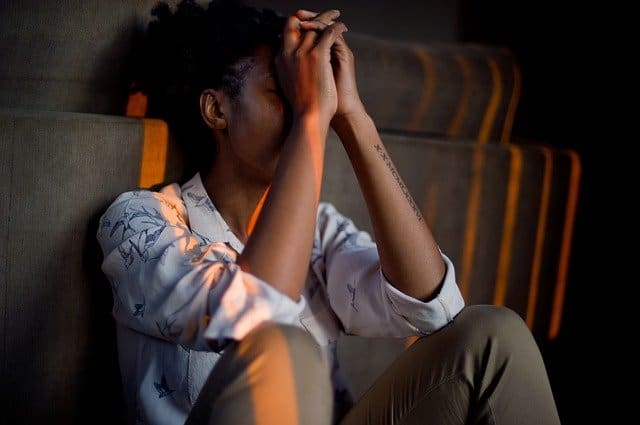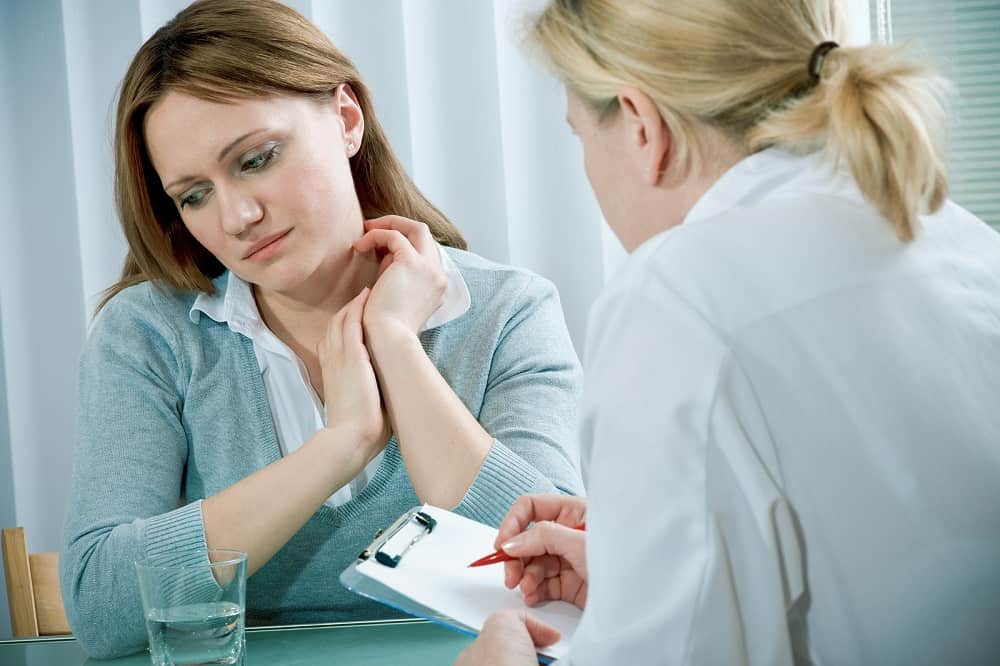We live in exceptionally troubled times. Now, in this month of March that every year marks “Self-Harm Awareness Month,” it would be logical to say that some of us are better placed than others to cope with the daily onslaught of new numbers of diagnosed coronavirus (COVID-19) cases, new numbers of fatalities, and the enormous feeling of plain uncertainty that is currently pervading our lives. The global pandemic of the coronavirus has had a dramatic, even surreal impact on every single one of our daily lives. Countries’ borders have closed, major cities across the world are in complete lockdown, very few commercial airplanes are flying in the sky, and, in some parts of the world, even the military is patrolling the streets. Troubled times, for sure.

For those less able to cope with the utterly abnormal effect of this pandemic on our lives, the simple premises of “self-isolation” and “social distancing” will be burdens that are incredibly hard to bear. Those most vulnerable, already living with underlying medical conditions, and that includes substance addiction, alcoholism, and the severe behavioral issue of self-harming, now have to contend with the anxiety, stress, and fear of the unknown – for the future, our future, has never been so uncertain. Coronavirus, addiction, and mental health disorders may create a perfect storm. For those in addiction recovery, where social engagement and togetherness are more than a significant part of any success, that unknown future mentioned above may have dangerous repercussions, especially for those with co-occurring mental health and behavioral disorders, such as self-harming. This article – “Coronavirus, Teen Mental Health and Addiction Recovery” – is designed to educate and assist those who are in recovery from substance addiction, who are also dealing with the behavioral disorder of self-harm; the largest demographics in the U.S. for this co-occurring condition are teenagers and young adults. As well as providing valuable information and insight about the issue of coronavirus and addiction, as well as self-harming, it will also provide essential strategies, addiction recovery tools, and coping mechanisms to keep you safe and on track, as you seek your recovery from substance abuse, and all that goes with it.
Teenagers & Self-Harm Awareness Month
Observed nationally in the U.S., Canada, and most west European countries every March, “Self-Harm Awareness Month” is designed to educate the public about the condition (around 2 million people, predominantly teenagers and young adults, are affected every year in the U.S.), and to attempt to break the social stigma that surrounds the issue of self-harm. In fact, around 90% of self-harm cases begin in adolescence, usually around the age of 14, and likely continue into the sufferers’ 20s. However, it may even continue or start much later in life. Because self-harm is more common among teenage and adolescent girls, much of the associated stigma is that those who engage in this behavior are attention seekers.
Why Do Teenagers and Adolescents Self-Harm?
Self-harm (also known as self-injury) is a behavioral response to severe emotional distress or trauma. The intentional, non-suicidal injuries are a way for some youngsters to mirror psychological pain with physical pain. By inflicting this kind of physical injury onto themselves, the person either feels a calming effect, albeit, a temporary one, or as a means of simply “feeling something” to counter their perceived emotional numbness.
How Common is Teenage Self-Harm?
Although considered to be a kind of fringe condition, teenage self-harm is far more common than most people understand it to be. Part of the reason for this is that self-harmers can easily hide or explain away their injuries. With teenagers, around 15% will inflict some type of self-injury onto themselves at some stage (that percentage drops to only 4% with adults). The most common forms of self-harm(including teenage self-harm) are:
- Skin cutting: 70-90%
- Head banging/hitting: 21-44%
- Flesh burning: 15-35%
The Shame & Stigma of Teenage Self-Harm
Many people who self-harm are labeled as nothing more than attention seekers by those unfamiliar with the condition, and, as you would expect, this only increases their sense of isolation and alienation. This is a significant factor in trying to address the issue in treatment, especially if the self-harm is coupled with substance abuse (as it often is). Additionally, teenagers can be particularly vulnerable, often believing that they are the only ones in the world having to cope with such issues. However, self-harm is treatable, and young people can and do recover.

Self-Harm: Types of Treatment Available
If the teenage self-harming behavior is associated with a mental health disorder, eg. depression or borderline personality disorder, the treatment plan will focus on that particular disorder, as well as the self-harming. However, treating teenage self-harm patients can take time, hard work and the sufferer’s own desire to recover. Self-harm treatments include:
- Psychotherapy, which helps to
-
- Identify and manage the underlying issues that trigger self-harm
- Better manage distress
- Regulate emotions
- Boost self-image
- Improve relationships and social skills
- Develop effective problem-solving skills
- Types of effective individual psychotherapy include:
-
-
- Cognitive behavioral therapy (CBT)
- Dialectical behavior therapy (DBT), and
-
- Mindfulness-based therapies
Coronavirus & The Dangers of Isolation in Addiction Recovery
Active substance addicts and alcoholics are already educated experts in the practice of self-isolation, social distancing, and the possibly life-saving art of keeping yourself to yourself – except, of course, when they need to deal with street-corner drug vendors to get that next hit, purchase that next bottle of liquor, or fulfil the next opioid painkiller prescription. Needs must, as they say – coronavirus and addiction. Diminished self-esteem and confidence levels, the shame and stigma associated with substance abuse, physical separation from families and friends, the depressive effects of substances, particularly alcohol – all these will contribute to that sense of isolation, that desire to satisfy their addictive needs alone, unless there’s no other choice or they’re too far gone.

Isolation: The Arch-Enemy of Recovery
However, should those same drug addicts and alcoholics find a path to addiction recovery, that whole ethos of isolation and separation is completely spun on its head – social connection, the concept of sharing, and of being open, regardless of their obvious vulnerabilities, are vital for their addiction recovery to stand a chance of success. The sense of community that exists within the confines of a residential rehab facility, the group support, and the attendance at either Alcoholics Anonymous, Narcotics Anonymous, or another form of group support therapy and meetings are all prime examples of how, even though the decision to find recovery is an utterly individual one, the success of addiction recovery is dependant in part upon the recovering addict’s network of support and social connections being there for them. For a self-harming teenager, struggling with their own substance abuse issues, such a set of circumstances can be even more concerning – for both them and their families.
How to Cope with Anxiety, Stress & Fear During Addiction Recovery
Self-isolation, social distancing, city lockdowns, movement restrictions, the banning of both public and private gatherings, the closure of non-essential businesses – all of these can prevent the recovering addict from actively continuing their recovery journey, as addiction recovery programs rely on social contact and the support of others. However, by introducing the following coping mechanisms and “work-arounds,” the recovering addict can ensure their recovery addiction is, firstly, not threatened or endangered in any way by the distancing measures introduced by the state where they live, and, secondly, that the recovery itself can continue. Not knowing for certain exactly how recovery can continue could well contribute to anxiety, stress, and even fear.
Coping with Anxiety & Stress During Lockdown & Self-Isolation
The following general advice is for anyone experiencing feelings of anxiety and/or stress either during a state-mandated coronavirus lockdown or during a period of quarantine (self-isolation). Working to protect your mental health is important for all, but it is especially useful for teenagers that self-harm as a way of coping. The parents of those who self-harm will find this advice useful too. During such times, it is important:
- To remind yourself that this is only a temporary period of isolation, intended solely for slowing the spread of the coronavirus.
- To remember that by abiding by these rules, your assistance is actually helping others in your community to avoid contracting the virus.
- To stay connected with friends, family, and colleagues via email, social media, video conferencing or the good old-fashioned telephone.
- To engage in healthy activities that you enjoy and that relax you.
- To keep to your regular sleep routines and to eat a healthy diet.
- To maintain your physical activity.
- To establish healthy routines, and to view this period as a new experience that can bring health benefits.
- To avoid news and social media if you find it distressing in any way.
As the parent of a teenager who self-harms, there are a number of strategies that you can employ to reduce any anxiety and/or stress in your child:
- Be honest with your teenager about the coronavirus pandemic – answer their questions and only share official facts.
- Reassure your teenager that they are safe.
- Limit your family’s exposure to news coverage, including social media.
- If schools are closed, create a schedule for both learning and relaxing activities.
- Be a good role model for your teen by taking breaks, getting plenty of sleep, exercising, and eating well.

Continuing Treatments, Therapy & Relapse Planning for Recovering Addicts
Obviously, with the social restrictions being set by each state, including mandatory quarantines for those testing positive with coronavirus, it is important for the recovering addict to check which elements of their normal recovery process are affected and altered by the current situation. For example, here in Washington state, one of the worst affected areas in the U.S., Gov. Jay Inslee has brought in a minimum 2-week stay-at-home order (due to end April 6, but likely to be extended), with only essential businesses, eg. grocery stores and food banks, allowed to remain open. All residents must remain at home unless grocery shopping, attending a doctor’s appointment, or working at an essential business. Therefore, the recovering addict needs to be fully aware of what they can do towards their recovery. It is essential they check:
- Relapse Prevention Plan & Support Network: Revise their Relapse Prevention Plan if required, and ensure that all members of their support network are available, either by phone or instant message in the first instance. Obviously, it is possible that a network member becomes unwell, and is unable to fulfill their supporting role.
- Medical Appointments & Outpatient Programs: All appointments as part of an addiction treatment outpatient program (OP) are deemed as medical, and should be kept if possible. It is important for the OP patient to check with their rehab facility or medical center how their program may be affected.
- Counseling / Therapy Sessions: Ongoing individual counseling or therapy sessions (outside of medical programs) may or may not be possible during this time. Check with the counselor or therapist responsible.
- Support Meetings, eg. AA and NA: These meetings* will be affected by whatever state restrictions are currently in place. However, many normal face-to-face meetings now have an online replacement meeting. For further information, check the AA’s Online Intergroup website or the NA’s Find A Meeting webpage, whose meetings can be accessed through their local websites (provided once you have searched a location).
*Note: Other organizations that offer group support meetings will have relevant information available on their respective websites. It’s also important to remember that there are a huge number of other teenage addiction recovery resources out there to help keep an addiction recovery on track.

Teenage Addiction Recovery and Mental Health Therapy
Northpoint Seattle is part of a network of specialized addiction treatment and mental health therapy rehab centers across the northwest of the U.S. Our sister facility in Nampa, Idaho – Ashwood Recovery – has designed their addiction and mental health treatment programs specifically for the teenagers in our wider community.
“Addiction is a pediatric disease. When adults entering addiction treatment are asked when they first began drinking or using drugs, the answer is almost always the same: they started when they were young – teenagers.” – Dr. John Knight, Founder & Director, Center for Adolescent Substance Abuse Research, Boston Children’s Hospital
Particularly appropriate during Self-Harm Awareness Month, our teenage addiction and mental health program is there to meet the needs of both teenagers and their families – one of the most difficult revelations for a parent to deal with is when they realize their child is suffering from mental health issues, such as depression, anxiety, and addiction. Sadly, many parents have no idea where to turn for the professional and expert help their family needs, especially as teenagers have special needs when it comes to mental health therapy and addiction recovery.
Types of Therapy & All Personalized
All clients who come to the Northpoint family of addiction recovery and mental health therapy rehab center receive a personalized treatment plan, as we are all individuals with certain and different needs. Our various mental health therapies include:
- Grief and Loss Trauma Therapy: For many teenagers, unresolved and untreated trauma is at the heart of their mental health issues. The misuse of drugs or alcohol may be a way to cope or to self medicate. Our therapy includes the use of EMDR (eye movement desensitization and reprocessing), a type of extremely successful psychotherapy.
- Family Therapy: Many families have found it impossible to cope with teenagers exhibiting serious behavioral health problems and accompanying substance use disorder. This therapy benefits all members of the same family, as a way to mend broken relationships and start that part of the healing process.
- Relationship Counseling: Teenagers who struggle with mental health issues or addiction often struggle with their interpersonal relationships, eg. difficulties with socializing, and expressing their emotions. Relationship Counseling teaches valuable communication skills and the appropriate ways to relate to other people.
- Cognitive Behavioral Therapy (CBT): CBT is a form of treatment that can help teenagers learn how to change destructive behaviors. It can also address a range of issues, such as depression, anxiety, and eating disorders, and is especially helpful for teens who are addicted to drugs and/or alcohol.
- Co-Occurring Intervention and Dual Diagnosis Treatment: Many of the teenagers treated at Ashwood Recovery Nampa are dealing with co-occurring disorders (also known as dual diagnosis), meaning that they have mental health issues that are at least partly to blame for their substance abuse. Dual diagnosis treatment is used because it addresses both the addiction and the mental health issues simultaneously – vital for both to be treated successfully.
Adolescent Support Groups and Counseling
In addition to these therapies, treatment at Ashwood Recovery Nampa also includes the following:
- Individual counseling sessions
- Family healing groups
- Anger management groups
- Life skills groups
- Art therapy groups, and
- Pet therapy groups
Ashwood Recovery Nampa is located at 847 Park Centre Way, Suite 7, Nampa, ID 83651. Admissions: (877) 855-5120. We work with teens between the ages of 13 and 17 years old to provide them with the support they need for addiction recovery and self-harm.
